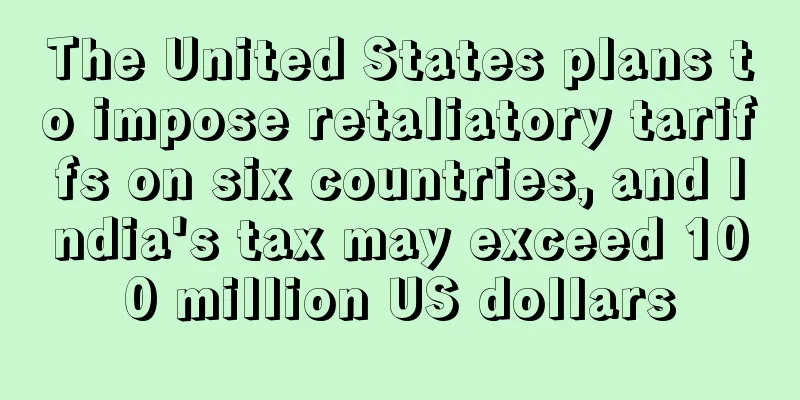The United States plans to impose retaliatory tariffs on six countries, and India's tax may exceed 100 million US dollars

|
According to the Environmental Times, the United States is planning to impose retaliatory tariffs on six "allies" including India . Some Indian media said that if the United States decides to take action, the tax increase on India may reach 25%.
U.S. Trade Representative Katherine Tai said that this was a retaliatory tax increase against the six countries' increased digital service taxes on U.S. companies, and that the current U.S. government will maintain the threat of tax increases on Austria, Britain, Italy, Spain, Turkey and India.
The US believes that the digital service taxes levied by these countries are mainly aimed at large technology companies such as Facebook and Google or e-commerce platforms such as Amazon. Since these American software generate huge receivables in these countries every year, the collection of digital service taxes will have a very big impact on these American companies.
In fact, it was not just these few countries at the beginning. Countries or organizations such as Brazil, the Czech Republic and the European Union had tried to impose digital taxes on these American companies. However, the US Trade Office launched a tariff investigation at that time and threatened to increase tariffs on these countries or organizations, causing these countries to give up imposing digital service taxes. In the end, only six countries including the United Kingdom and Italy were left.
It is foreseeable that if these six countries insist on imposing a digital service tax, the United States will definitely use this as an excuse to increase tariffs on these countries. However, if they give up imposing a digital service tax, these countries will also face considerable losses. By then, whether it is the United States or the six countries subject to additional tariffs, the price level will probably rise, or there will be a large market gap waiting to be filled.
Especially India. Although the US tax increase on India will not cover all goods, if the US really imposes retaliatory tariffs on India, the tax may exceed US$100 million. In addition, the Modi government banned a number of Chinese applications for no reason in 2020. India's local applications cannot completely fill the market gap, resulting in India's dependence on US software has skyrocketed. Coupled with India's huge population base, India may be charged higher taxes than other countries at that time. tariff E-commerce platform Amazon Platform |
<<: Focusing on female consumption, Middle Eastern e-commerce Kenz completes six-figure financing
>>: Albertsons and Google partner to optimize omnichannel shopping experience
Recommend
The seller's storage capacity has skyrocketed to 999999? Here is a reasonable way to increase storage capacity...
Amazon sellers are frantically clearing out their...
"Timely Language" received tens of millions of yuan in Pre-A+ round financing, and the new version of the cross-border AI customer service product driven by the big model has been launched
Text|Shen Xiao Editor: Wang Yutong 36Kr learned t...
What is Rockport? Rockport Review, Features
<span data-docs-delta="[[20," ","...
The product "dominates the charts"! Amazon traffic supports this project
Despite the constant doubts, the sellers’ enthusi...
AliExpress Fujian Merchant Operation Service Center was established, bringing merchants' "outbound outlet" to their "doorstep"
On March 8, 2022 , Alibaba Global AliExpress Fuji...
What is Rue la la? Rue la la Review, Features
Rue la la is a brand discount flash sale website f...
$9.9 billion! The U.S. pet treats industry is growing rapidly
In recent years, the snack industry for pets such...
What is Webgility? Webgility Review, Features
Webgility is the #1 automation software for Quick...
Winter products are about to hit the sales peak!
Winter in China came unexpectedly, and the temper...
What is Display Module? Display Module Review, Features
Display Module was established in Ningbo, China i...
What is Amazon Brand Gating? Amazon Brand Gating Review, Features
Amazon Brand Gating is Amazon’s control policy ag...
Major European ports are on strike, and ships may face congestion and delays!
Foreign media reported that the Panhellenic Union...
SHEIN was pointed out by the British government for insufficient information on labor supervision system
In the UK, companies over a certain size are requ...
UK Amazon workers to strike before Christmas
Hundreds of Amazon workers at their vast warehous...
Monthly sales volume is over 20,000, and a batch of Halloween products are booming!
As one of the biggest carnival festivals in the s...









